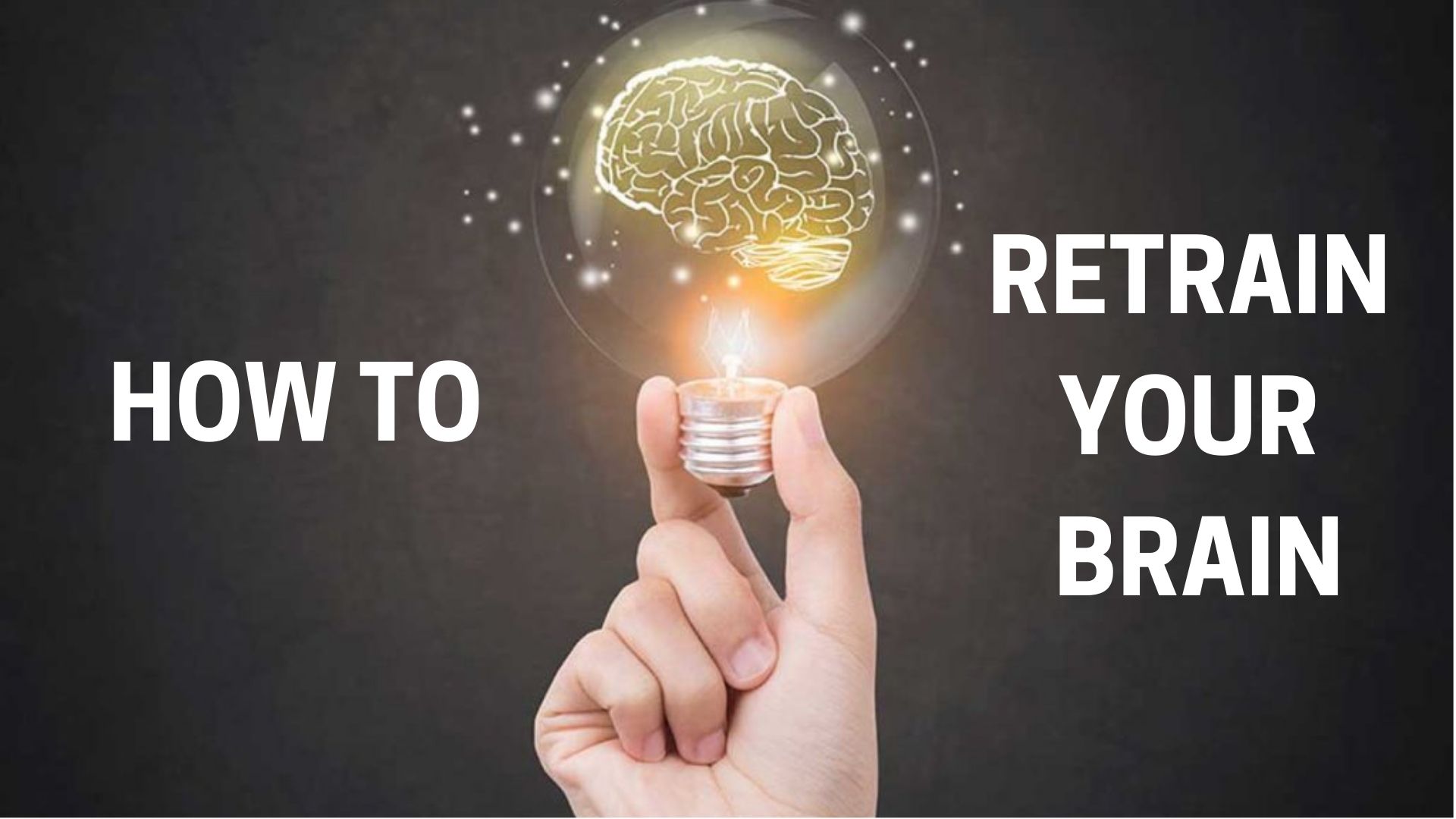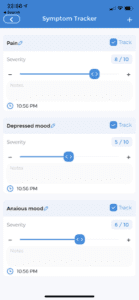
Have you ever felt like you needed a break? Do you have negative thinking patterns or chronic headaches that you need to get relief from? Have you tried all the regular methods and still come up short? Then you need new ideas on how to retrain your brain. This article will take you through the different reasons and coping methods to retrain your brain. It will culminate in highlighting how healthcare apps can benefit your journey as you learn how to retrain your brain.
[1][2][3]Why Retrain Your Brain
There are many reasons you need to learn how to retrain your brain. It can be to combat negative thinking patterns or because you live with chronic pain. While the idea of how to retrain your brain is common to both, the reasoning for the need is different.
How do Negative Thoughts Affect the Brain?
There are common thinking patterns you should be aware of. By knowing what they are you can be cognisant of implementing strategies faster when they do come up.
- All-or-Nothing Thinking – thinking in terms of extremes can be dangerous. You can either think you’ve completely failed or think you are perfect. It is all dependent on how you label yourself or someone else labels you.
- Overgeneralization – believing that one negative experience will lead to a future of only negative experiences.
- Magnification (Catastrophizing) – exaggerating an experience and within that experience overemphasizing your own imperfections and fears. You make things a significantly bigger deal than they actually are.
- Emotional Reasoning – completely believing how you feel represents the entire truth of your reality.
- Should Statements – using “should” statements to force yourself into certain behaviors that leave you feeling pressured or frustrated rather than motivated in a healthy way.
- Negative Rumination – continuously focusing on negative outcomes leading to feelings of anxiety, depression etc.
- Overthinking – trying to think of and plan for every possible scenario in an attempt to control the outcome, to ultimately avoid what you perceive as failure.
By not being aware of these patterns, you will find yourself slipping into a negative frame of mind that is extremely hard to combat. The longer these thinking patterns fester unchecked, the harder the climb back to neutrality.
How do you Retrain your Brain from Chronic Pain?
Chronic does not mean your pain has to last forever. There are ways to cope with and not focus on that feeling all the time. By knowing how chronic pain is created, you have a better chance of combating it and leading a relatively normal life.
- The brain and nervous system create all pain – when your body sends “danger” signals to the brain it interprets those messages and decides whether or not to create pain.
- Acute Pain vs. Chronic Pain – acute pain is short-term pain that teaches you dangers to avoid in the future. It acts as a protective mechanism to prevent you from creating irreversible damage. Chronic pain is like a faulty alarm system. The brain continues to send out pain signals even when there is no threat. This causes hindrance to everyday life in the long-term and does not have a way to turn off.
Why Does the Brain Create Chronic Pain Signals?
The answer lies in neuroplasticity. Neuroplasticity means that your brain learns to physically adapt throughout your life, as things happen to you. The neural pathways within your brain change with every encounter. The more the experience is repeated the stronger the pathway gets. Chronic pain sent over a long period of time creates extremely strong neural pathways that are hard to adapt. The good news? What your brain can learn, it can also unlearn.
What Pain-Creating Behaviors Exist?
- Hypervigilance – By being aware of, and therefore excessively focusing on your pain, you start to think of every action as a potential threat. Being in a constant state of “high alert” sends signals back to the brain that there is constant danger even when there is not.
- Pain Catastrophizing – you think of “worst-case scenarios” all the time. This feeds back to your brain as a constant danger and makes you hyperaware of the pain you feel.
- Fear Avoidance – The first two behaviors mentioned lead to fear avoidance. You become so fearful of your pain that you avoid anything that could possibly make it worse. This means you avoid doing anything after a while. Living in this constant state of fear makes your pain worse. You are under permanent stress which leads to de-conditioning (weakening of your body due to lack of use).
By knowing what chronic pain is, and what causes it, you can now focus on treatment methods and create a long-term plan for how to retrain your brain.
[4][5]Treatments to Retrain your Brain
Different needs for how to retrain your brain lead to different strategies. While most of these strategies are interchangeable, they do work most effectively for their given causes.
Negative Thinking Patterns
- Practice Mindfulness – the first step is for you to become aware of your current thinking patterns. Once the patterns are clear in your mind, you can make the choice to engage with them and feed into them, or to ignore them. The best way to ignore them is to focus on your breathing.
- Address Your Inner Critic – whenever that voice inside your head starts to say negative things, take a step back and ask yourself if anything it is saying is really true. Another great mechanism is to choose not to engage with the thoughts.
- Know Your Triggers – finding the situations or the comments that most often trigger negative thoughts is extremely important. When you are aware of your triggers you can create ways to combat those triggers when they do arise.
- Journal – Writing down your feelings on paper helps expel negative thoughts The more your write, the more patterns emerge through journaling. You can identify these patterns and then create coping mechanisms for when you see them start to arise.
- When Possible Change Your Surroundings – by physically removing yourself from a negative situation, you can clear your head of negative thoughts. This is a great way to prevent negativity from becoming habitual, which is a significantly harder cycle to break.
Remember to give yourself time and understanding if these strategies do not work overnight. Attempting to retrain your brain for patterns that have formed over years is extremely hard. Habitual patterns are the hardest to undo so remember to show yourself compassion and kindness.
How Does the Brain Deal with Chronic Pain?
- Cognitive Behavior Therapy (CBT) – CBT teaches you to replace negative thinking patterns with positive thoughts about pain. This is a way to actively tackle the pain-creating behaviors mentioned above. CBT helps alter neural pathways which in turn alters how much pain the brain perceives.
- Acceptance and Commitment Therapy (ACT) – ACT helps you accept your thoughts and leads to the understanding that not every thought needs to lead to a behavior. You learn to let negative thoughts pass through your mind without having a reaction.
- Graded Exposure Therapy – This therapy is specific to fear avoidance. Within exposure therapy, you will be slowly introduced to situations that elicit fear. Each situation is broken down into smaller encounters which helps you create coping mechanisms within each mini-situation. The brain is actively trained away from seeing certain pieces of the situation as a threat and therefore does not create pain signals.
- Graded Motor Imagery (GMI) – the brain has mirror neurons that allow you to imagine yourself in certain situations. Within GMI, your brain and mirror neurons are actively trained to see/ imagine certain movements as pain-free. After a certain point, the images in your mind can be done physically to elicit the same pain-free response.
- Biofeedback – This therapy uses monitors to make you aware of your body’s reaction to certain situations. This therapy is used in conjunction with a therapist. The therapist teaches you how to negate tension in situations your body is reacting to. By learning these techniques you can regulate your body processes and teach your brain you are safe.
Self-Management Techniques to Retrain your Brain
In addition to therapies, there are other techniques you can use to give yourself temporary relief.
- Exercise – you can prevent de-conditioning, as well as boost mental health and reduce stress. It can also be a powerful tool in training your brain away from pain by allowing you to focus on something else for a period of time.
- Setting Goals – having a purpose and setting goals helps keep you motivated. With a long-term goal in mind, you will put in extra effort to retrain your brain. Your purpose can be anything as long as it keeps you motivated in your fight against chronic pain.
Methods to Begin Retraining your Brain
For chronic pain specifically, there are a number of things you can do to learn how to retrain your brain. This is an overwhelming journey so here are a few tips and tricks to make that first step easier.
- Educate Yourself About Pain Science – gather information from articles, blogs like this one, videos, books etc. The more information you arm yourself with, the better prepared you will be to tackle challenges ahead. Even if you do not fully understand the science, read and ask for help. Knowledge is power.
- Be Consistent And Patient – nothing good happens overnight. You have to be patient with yourself and practice the actions till they become habits. Set aside 15 minutes every day to repeat what your therapist taught you. Constantly practicing your new actions will become second nature. This is how neuroplasticity works.
- Ask For Help – there is no shame in asking for support. Having people in your close circle of family and friends to help makes recovery faster. By creating an environment that is knowledgeable and supportive of your journey, managing your chronic pain becomes easier. Another good strategy is to find a support group for people going through similar struggles.
Remember recovery means different things for different people. What works for one person may not work for you. Don’t get discouraged. You may never be completely pain-free or you may take longer to get there. That’s ok. Celebrate each milestone and success because you are making your life better, one small step at a time.
[10][11]How Can Digital Health Solutions Assist in Brain Recovery?
This article has highlighted great strategies to implement, but how do you track those strategies? How do you recognize patterns of what is working and not working? Use an app.
There are no traditional apps for how to retrain your brain but what you should look for is the following:
- Diary Feature – one of the strategies mentioned above talks about journaling. A diary feature is an online journal where you can write down notes, thoughts and reflections. This is a great way to keep track of your progress every day. In the long run, this feature will also help you identify patterns to continue and avoid.
- Symptom Tracking – traditionally symptom tracking was used for physical illnesses such as colds, flu etc. On an app, there are many symptoms you can add that are not physical such as depression, anxiety etc. By identifying symptoms before your negative thought patterns or chronic pain start, you can look to avoid activities that cause them.
- Medication Tracking – in the case of chronic pain, you are likely to have prescriptions to help manage the pain. Tracking your medication to avoid overuse is extremely important. The best way to do this is through a medication tracker which will allow you to fill out dose amount, dose quantity and frequency.
Digital Health Solutions to Retrain your Brain
There is one app that can help with all your diary and tracking needs. The CareClinic app is an all-in-one care app. It is easy to use and can be accessed at all hours of the day. The app has a diary, symptom tracker and medication tracker within one space. You also have access to hundreds of blog articles within the website that can shed light on other strategies or give you more information about mental health and chronic pain. The most unique part of the app is the fact that it can be shared with other people such as your doctor, therapist, and family members to make treatment easier.
Digital Diary for Tracking your Thoughts

Another great feature is the journal prompts. With the mental health part of retraining your brain, it is necessary to write about how you are feeling. The best outlet for stress and fear that could affect your recovery is through the diary. Write about even the smallest of things. When learning how to retrain your brain, even a small setback can affect your rate of recovery. If you do not know where to start the prompts can help.
Symptom Tracking for Retraining your Brain

You can select from a list of medical symptoms and record them as part of your daily check-in or journal entry. Common symptoms of migraines include fatigue, depressed mood, insomnia, headache and throbbing sensations. From the drop-down menu on the symptom tracker, you can keep a log of the start date, the frequency and the intensity of a symptom.
Furthermore, you can track your sleeping patterns, daily physical activity, nutrition and other measurements to get informed reports about your body. You are also able to add custom fields to track what matters to you! Your symptom tracking makes it easier for your healthcare provider to make informed and accurate decisions.
Once entered, you can track and access your profile easily. Your information is confidential and accessible by only you. If you prefer viewing on a larger screen, opt for the CareClinic web app!
Medication Tracking for Retraining your Brain
This is a very helpful feature for doctors who have started you on medication and need to regularly stay up-to-date with the effects of those medications. This is especially useful when doctors are tracking in conjunction with your symptoms. They can increase or decrease doses of sleeping pills, anti-anxiety medications, anti-depressives etc. based on your symptom entries every few weeks. This ensures you get the best overall care when trying to manage and combat chronic pain. This is not only helpful for doctors but also primary caregivers who can keep up-to-date with your symptoms and medications throughout the course of treatment. The great part about the medication tracker is your primary caregiver; family, friend, partner etc. can also add any medications you may have missed. This is the best way to ensure holistic healthcare.
Digital Content Support for Retraining your Brain
CareClinic is “Google News” certified. The blog holds hundreds of papers ranging from mental health to specific illnesses and remedies. Each blog article is carefully curated, researched, and reviewed by a team of experts to give you up-to-date scientifically certified information. You can find numerous articles on the website related to mental health, chronic pain and treatment plans. These other articles can offer insights that you can implement into your own care plan.
[14]Digital Health Assistance for Retraining your Brain
The CareClinic app is available on three sites: the App Store for IOS users, Google Play for Android users and on the CareClinic website for direct download. Living with negative thoughts or chronic pain is lonely. While people may empathize and sympathize, few understand what you are going through. A great way to get your worries and fears out is through using the app. Your best chance at recovery is to document every detail, big or small to make your next treatment and, eventually, your life, that much better. Use the CareClinic app and expel every negative thought to focus on clean recovery. This will help you feel better and help with neuroplasticity in the long run. Get tracking today.
[15]References
- “Psychological approaches for migraine management – PMC”. https://pmc.ncbi.nlm.nih.gov/articles/PMC10513739/
- “10 Natural Remedies to Rewire Neural Pathways for Headaches | MOTUS”. https://www.thisismotus.com/post/10-natural-remedies-to-rewire-neural-pathways-for-headaches
- “You Can Now Treat Depression With an App”. https://time.com/7086622/depression-treatment-app-rejoyn/
- “Cognitive Distortions: Identifying and Challenging Negative Thinking Patterns -“. https://gettherapybirmingham.com/cognitive-distortions-identifying-and-challenging-negative-thinking-patterns/
- “Healing the Hurt”. https://time.com/83461/healing-the-hurt/
- “How to Make Your Mind Happy, According to Neuroscience”. https://time.com/4470517/neuroscience-of-mindfulness/
- “Mindfulness for Negative Thinking Patterns – HealthPost NZ”. https://www.healthpost.co.nz/blog/mindfulness-for-negative-thinking-patterns/
- “Cognitive Behavioral Therapy (CBT) | Pain Management Education at UCSF”. https://pain.ucsf.edu/nonpharmacological-pain-management/cognitive-behavioral-therapy-cbt/
- “Contextual Cognitive Behavioral Therapy for Chronic Pain – Clinical Pain Advisor”. https://www.clinicalpainadvisor.com/features/contextual-cognitive-behavioral-therapy-for-chronic-pain/
- “Train Your Brain Away From Chronic Pain – The Complete Guide – Pathways”. https://www.pathways.health/blog/train-your-brain-away-from-chronic-pain-the-complete-guide
- “Strategies to Rewire Your Brain and Reduce Chronic Pain”. https://texasnerveandspine.com/rewire-your-brain-and-reduce-chronic-pain/
- “Bearable – Symptom Tracker on the App Store”. https://apps.apple.com/us/app/bearable-symptom-tracker/id1482581097
- “[WEB] 17 Apps That Can Make Life Easier When Brain Fog Takes Over | TBI Rehabilitation”. https://tbirehabilitation.wordpress.com/2024/09/25/web-17-apps-that-can-make-life-easier-when-brain-fog-takes-over/
- “Tracker, Reminder – CareClinic on the App Store”. https://apps.apple.com/us/app/tracker-reminder-careclinic/id1455648231
- “The Link Between Journaling and Brain Health – Verbo”. https://verboai.io/the-link-between-journaling-and-brain-health/


